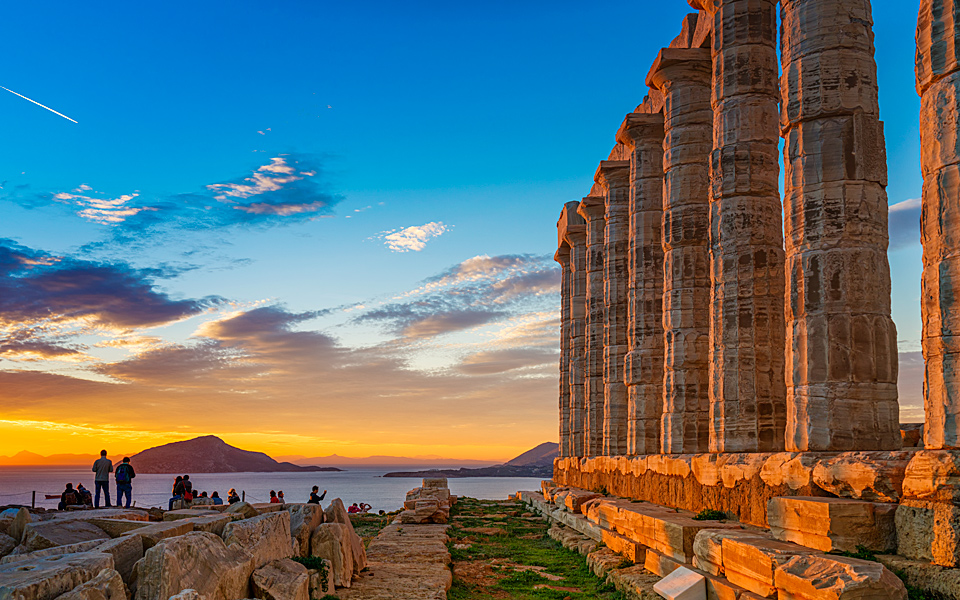On the peak of Cape Sounion, at the southernmost tip of Attica, stands the temple of Poseidon, beside whose columns one has virtually a hang-glider’s view of the Saronic Gulf. The distinct promontory was also sacred to Athena, worshiped in a small sanctuary below the summit. A timeless navigational landmark, Sounion was vulnerable to the passing Persian fleet in 480 BC, which stopped long enough for the invaders to destroy the temples of both Poseidon (early 5th c. BC) and Athena (6th c. BC). The latter was rebuilt a decade later, while a new temple for Poseidon, designed by Athens’ “Theseion Architect”, arose ca. 444 BC. After Sounion was strengthened with a hilltop fortress in the late 5th c. BC, it became an important Attic border post and coast guard station, equipped with a rock-carved ship’s ramp for the drawing out and rapid launching of small naval craft.
As Philip II, Alexander and their successors rose to power in the 4th and 3rd c. BC, Sounion was occupied by Macedonian troops. Under the Roman empire, the stronghold lost much of its military significance, but still proved advantageous to a band of rebellious slaves (ca. 100 BC) temporarily on the lam from the silver/lead mines at nearby Lavrion. Sounion also became notorious as a pirate haven and later as a favorite stopover for early travelers and antiquarians—including Lord Byron, in the early 19th century, who left his name prominently carved into one of the Poseidon temple’s marble doorposts.
For today’s visitors, just as for Byron, ancient Sounion should not be missed. This is one of the most inspiring, memorable sights in Greece. From the moment one first spies the tall elegant columns, while approaching Sounion along the sinuous Attic coast, the ancient temple’s ruins elicit awe. On the sacred promontory’s summit, sea and sky stretch into the distance as far as the eye can see. Peace and quiet reign, the sound of the wind, even other visitors’ voices seem not to offend. This is the perfect place for streaky pink sunsets, evening calm, an ouzaki by the sea in a neighboring tavern.
TIPS
- The adjacent Lavrion district is also not to be missed. Essentially an open-air archaeological park, the area is rife with fascinating traces of ancient and more recent mining operations. Industrial artifacts are displayed in the Lavrion Archaeological Museum, and minerals in a quaint museum in the former early-modern mining village of Aghios Konstantinos.
- The sea is right there and there’s always time for a swim. There are organized beaches at Sounio, Legrena and Harakas. In an area called Kape, you’ll find several quiet and more private spots.












